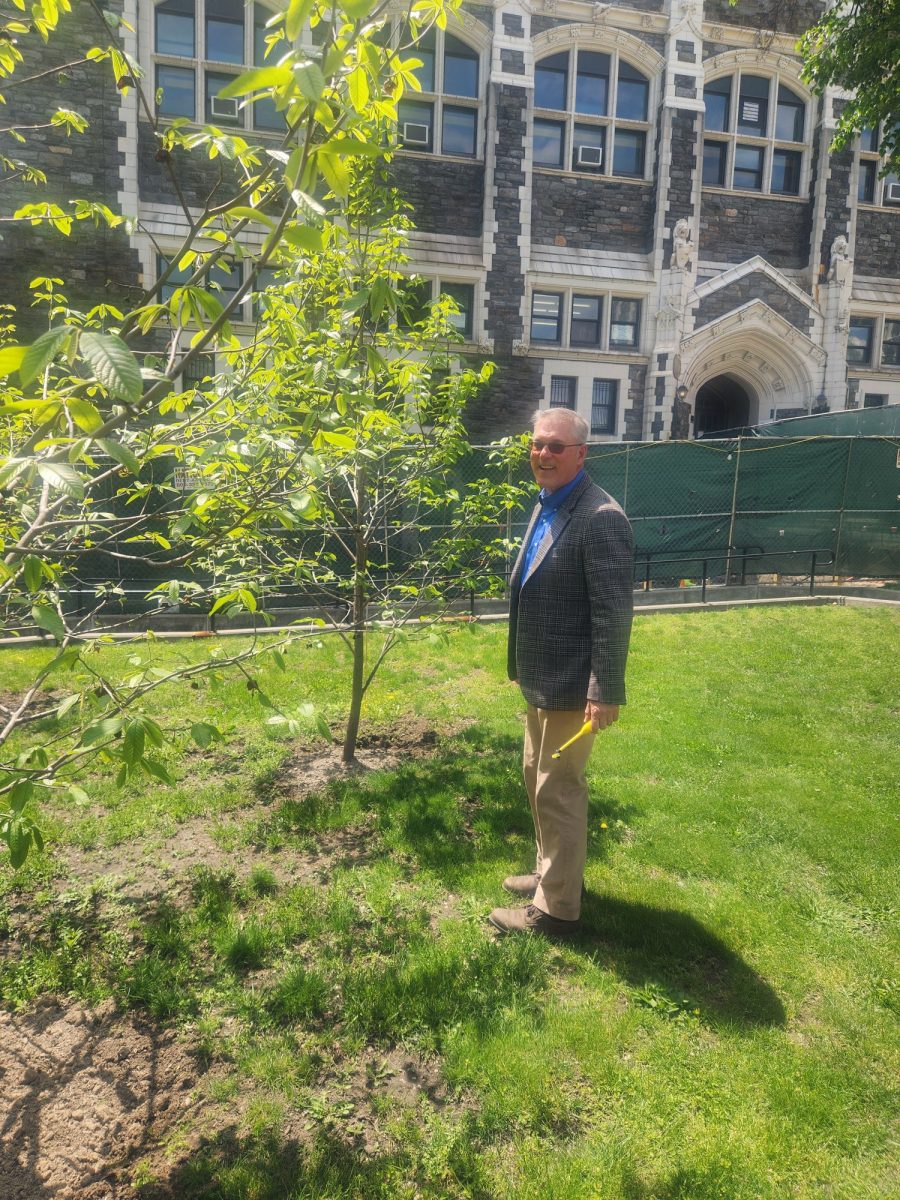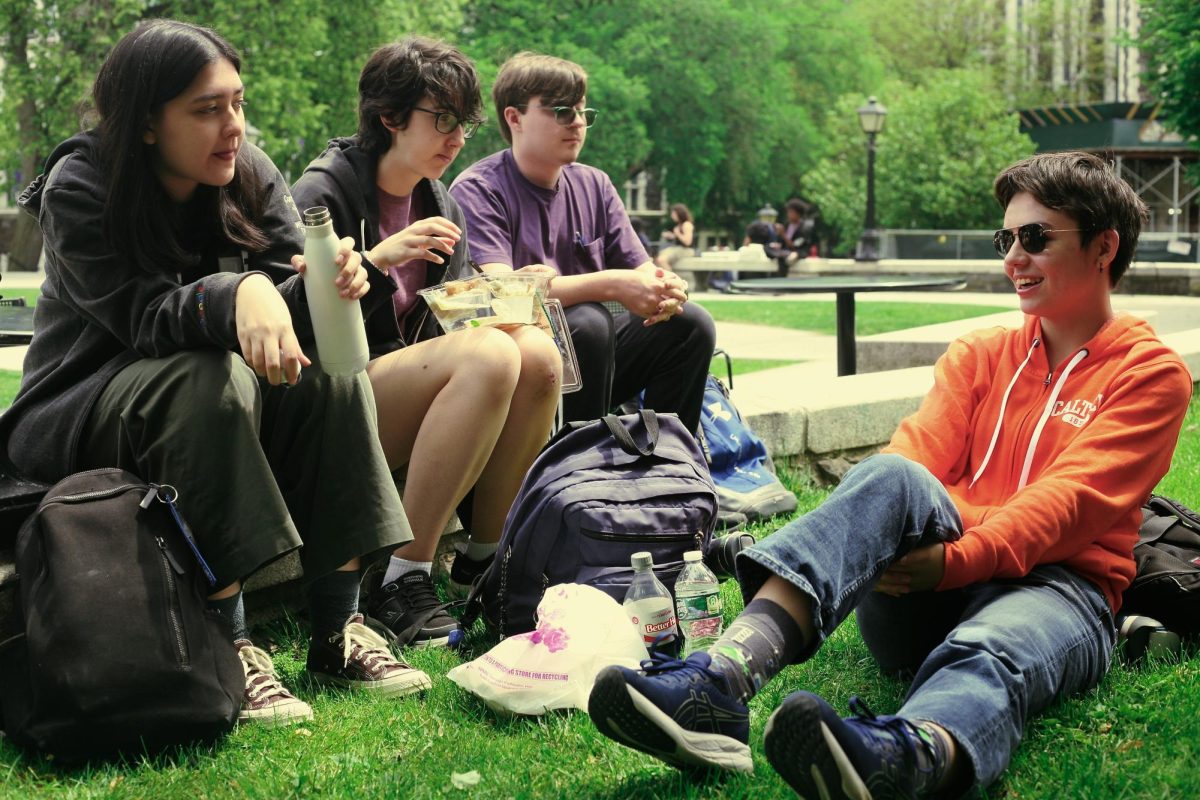Under The Glare: The Issue With Fluorescent Lighting
By Leila Pardieu
There’s a reason why you dislike school lighting. Many studies reveal that exposure to the rays emitted by fluorescent lighting can lead to decreased focus and concentration. This issue is particularly relevant for students at MSE, a specialized school with a rigorous curriculum and long class periods (generally 25–30 minutes longer, as compared to other schools). With our school’s fluorescent lighting, many students and staff may experience headaches, sleep pattern disruption, anxiety, and a hard time focusing on important tasks and schoolwork. Students and staff spend over six hours a day in classrooms, meaning that the effects of fluorescent lighting go beyond the lack of focus—the well-being of our community is compromised.
Interviews in the HSMSE community show a collective distaste for our lighting and a preference for lighting alternatives. To dive deeper into students’ opinions, I asked them a series of questions.
Have you ever experienced eye strain or fatigue during class or in the building in general? If so, how frequently?
Taha U. (‘27): “Yes, both eye strain and fatigue, especially in the classrooms on the second floor. This happens with every class on that floor.”
Amatoullahi D. (‘26): “Yes, when I’m in certain classes, it is hard to look at the board. It adds onto the stress of being in the class, because I can’t see what’s on the board. In the hallways, I also feel the same way.”
Elliot S. (‘26): “Yes. I feel sleepy, especially in the first and fifth periods.”
Jazmine C. (‘25): “Yes, every other day in class.”
What type of lighting do you prefer for studying or working?
Taha U. (‘27): “I prefer a yellow, more warm-toned lighting when doing assignments.”
Aden W. (‘26): “Warm LED or standard lightbulb light.”
Amatoullahi D. (‘26): “I like dim, warm lighting because it helps me focus more. I can’t really focus in super bright lighting.”
How does the current lighting impact your mood and focus during class?
Taha U. (‘27): “It’s uncomfortable. I wouldn’t call it a distraction, just that it gets annoying from time to time.”
Elliot S. (‘26): “It does not affect my mood or focus, but the C-floor classes with no windows makes me feel a bit more tired.”
Amatoullahi D. (‘26): “When I walk into a class with really bright lighting, it makes my mood worse, because I know I won’t focus as much as I can in class. It makes me feel annoyed.”
Jazmine C. (‘25): “It can get really bright at times, which makes me distracted.”
These are not just opinions of our community—research verifies that fluorescent lighting physically affects us. Migraines, abnormal sleep patterns, anxiety, fatigue, eye strain, and more are all common physical effects of fluorescent lighting. Spending lots of time in fluorescent lighting can make it harder for students to excel and learn and for staff to focus on work.
So how can we fix this? Many schools have turned to LED lighting, and our school should do the same. LED lighting provides many benefits that create a more conducive learning environment, which could benefit many members of the MSE community. To start, they have adjustable brightness and color, which would greatly reduce the eye strain and fatigue many students get from being in fluorescent lighting for over six hours. This kind of lighting also mimics the outdoors, which is suitable for students who have multiple classes in the underground C-floor, where there is limited natural light.
HSMSE students’ opinions from interviews on LED lighting were generally supportive.
What are your thoughts on switching to other lighting options, such as LED?
Taha U. (‘27): “I think it would be helpful for class.”
Amatoullahi D. (‘26): “I don’t know if everyone in school would prefer LED, but I think it would be better for focusing.”
Jazmine C. (‘25): “I think it would cost a lot, but if most students prefer this, I think it would be a good idea.”
The current use of fluorescent lighting at MSE has significant impacts on the comfort and productivity of our community in Baskerville Hall. By exploring the alternative of LED lighting, MSE could take impactful steps toward creating a more efficient learning environment. How so? To start, LEDs would consume less energy than fluorescent lighting, lowering the costs of using them. Our school community can save money using LEDs while also benefiting the student and staff population. Additionally, LEDs have a lifespan of 50,000–100,000 hours, adding up to about 6–11 years of use, which would reduce the stress of having to constantly replace lightbulbs. These lights could potentially allow for our school to not worry so much about their maintenance, as they are very long-lasting and efficient. However, this decision is up to our school’s administration and is strongly encouraged.





















